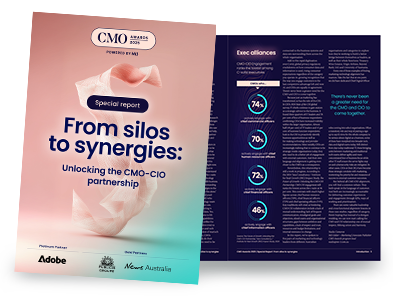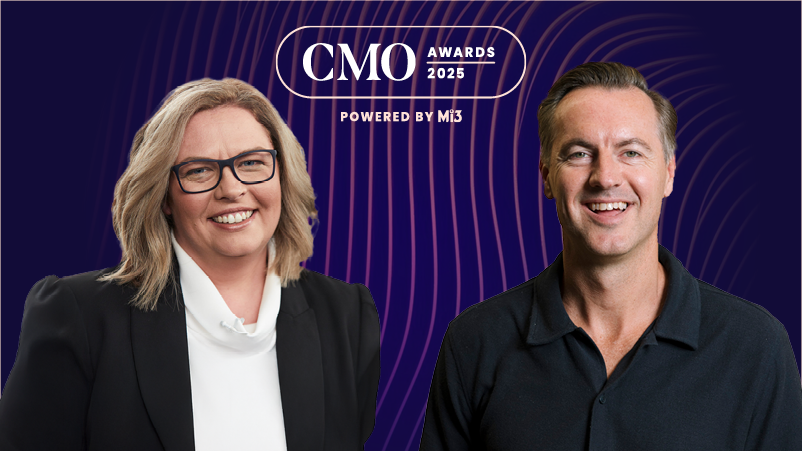Optimising the short to get to the long
None of these CMOs have taken their eyes off the short term while pursuing the long, however, and each has a story to tell about optimising the lower funnel or low-hanging CX fruit while embedding the more ambitious brand plan.
“I think the smartest thing we did … was we looked at building long-term demand at the very same time that we spent a lot on optimising some very conversion-based channels,” says Reflections Holidays' Pete Chapman. “When I came into the business, we were only answering 50 per cent of the sales calls coming in, if you can imagine that. We're spending all of this money in performance-based media, we're driving leads, yet we had a crap website, and we're only answering half the calls.”
So Chapman invested heavily in a local call centre, getting results up to 60, 70, then 80 per cent.
“That supplemented any drop we had short term in changing tack without advertising,” he says. “The same thing happened when we invested heavily in the website and drove ecom conversion up, and then we got to invest in brand, which we started at the same time.”
In Michael Hill’s case, bringing on Miranda Kerr as a brand ambassador provided a short cut to building key brand attributes in market quickly.
“When you're a listed business and you have to report to a board and show the value of what you're doing,” Feeney says. “I certainly know that my marketing budget hasn't increased in the last four years. In fact, it's the opposite. When you have a distinct asset like an ambassador like that, it helps elevate and adds value to your media spend as well. That's a really important piece. But showing the results and showing the data that we can drive from having an ambassador was critical, and proving out some of the metrics we put in place to be able to prove that value was important. There were lots of different data inputs and data points, but driving the growth of a new customer, fast tracking awareness and all of those metrics are really important to prove out the value.”
Transparency – even if it’s not working
The other thing all three marketing chiefs agree on is the need for open, honest and collaborative conversations across the organisation. All share cross-functionally as much as possible – even if the first results aren’t so crash hot – and have worked hard to build c-suite relationships.
“We opened the kimono, and said check out how we're thinking about media, come and have a look. Give us advice. Let us know what you think,” says Halbert. “That opened up trust, and was a really important part of how we got the support.”
Being vulnerable is another must for Halbert. When the first creative ideas proved not to be right for her rebrand plans, the Allianz marketing team shared this with the board and executive team.
“We had an amazing couple of ideas before we launched our story of our Eagle and Finch, and we drank the Kool-Aid, and thought we'd cracked it. We went to testing, and it failed. We went back to the executive team and board and said, we didn't do it, we've got to try again,” she says. “By showing those moments and that it's not all shiny, it's not all well-rehearsed, and it's not all perfect, and trying to show them a media model, telling them what you're struggling with, opening it up and letting them in, we haven't had an issue… because we've got the relationships and we've done the work and we've got the maths.”
Chapman agrees CMOs can’t afford to underestimate the value of building relationships with influential peers internally in a collaborative way.
“My closest relationship here in the business is our CFO; we work hand-in-glove,” he says. “I spent a lot of time building that relationship, and it came from a place where, previously, really, she was controlling marketing, and certainly controlling anything that it did in a meaningful way.
“We spent a lot of time together. We're incredibly aligned on now on the power of building brand to drive long-term demand and working on optimising the business to make the most of short-term demand. With that advocacy, we could really take that to the board.”
Having the “huge privilege” of working for a CEO who was the former Tourism Australia CMO (Nick Baker) helps too of course.
“I don't pretend to understand the challenge of working within an executive that doesn't understand or believe in the power of brand or marketing. But you still have to take that to the board and tell it in a way that that is going to get you buy in,” adds Chapman. “If you can work on some levers, way down the channel, way down the funnel, that can help sort of turbo charge some quick wins while you work on the longer-term wins.”

































